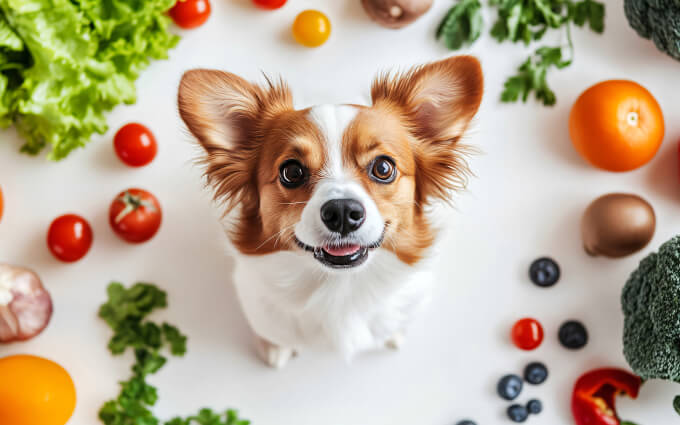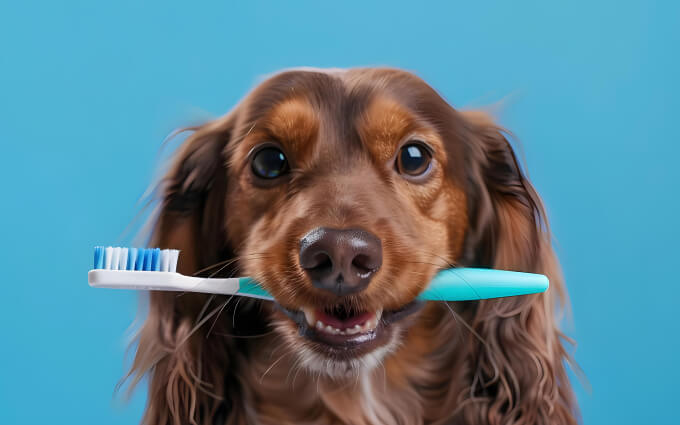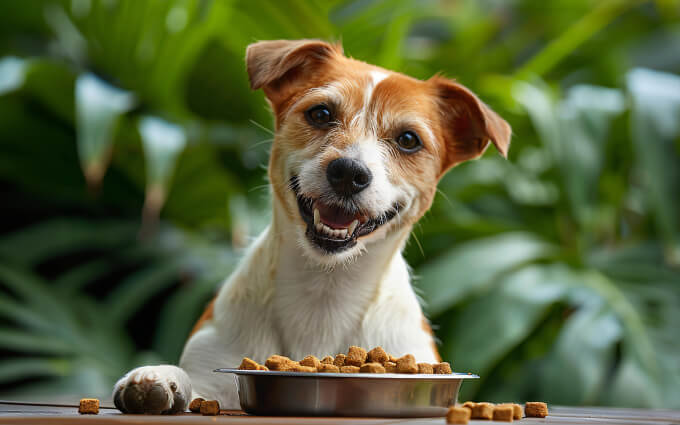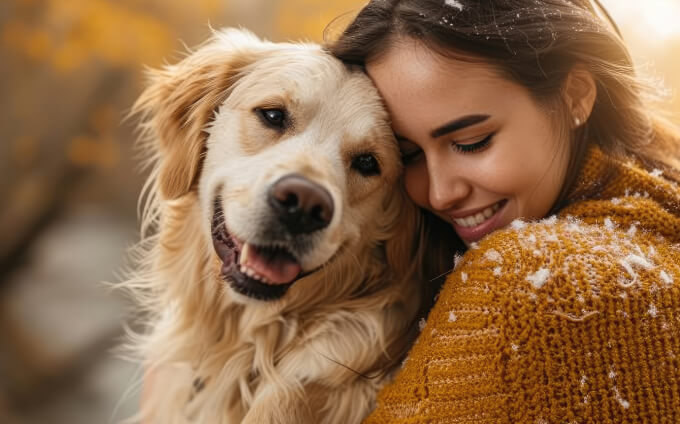- Home
- Puppies & Young dogs
- How Many Litters Can a Dog Have? Everything You Need to Know
How Many Litters Can a Dog Have? Everything You Need to Know
Learn about the number of litters a dog can safely have, ethical considerations, health implications, and best breeding practices to ensure the well-being of your dog.

- 56

The Basics of Dog Breeding
When it comes to breeding dogs, the number of litters a dog can have in her lifetime varies based on health, breed, and ethical considerations. Legally, there is no strict cap on the number of litters a dog can produce, but responsible breeders follow guidelines to ensure the health of both the mother (dam) and her puppies.
Recommended Number of Litters
Experts generally agree that a dog should have a maximum of 4 to 6 litters in her lifetime. This range helps to avoid health complications and ensures the dam has adequate recovery time between pregnancies. For instance, larger breeds like Golden Retrievers typically have about four to five litters, while smaller breeds might have fewer.
Starting to breed a dog at around two years of age and stopping by the time they are six to seven years old is recommended to prevent health issues related to overbreeding.
Health Implications of Excessive Breeding
Breeding a dog too frequently can lead to significant health risks. For the dam, continuous breeding without adequate recovery time can cause complications such as eclampsia and a decline in overall health. Puppies born from dams bred excessively often face health challenges, including being underweight or having congenital defects.
Additionally, older dams are more susceptible to pregnancy complications, and their puppies may be smaller, less healthy, or even stillborn.
Ethical Considerations
Ethical breeding practices prioritize the health and well-being of the dam and her puppies. This includes limiting the number of litters and ensuring that each breeding has a purpose, such as enhancing the breed's health, temperament, and conformation. Overbreeding can lead to dog overpopulation and contribute to the number of dogs in shelters.
Organizations like the United Kennel Club and the American Kennel Club set guidelines to prevent unethical breeding practices. For example, the UKC limits the number of litters per dam to four to five, while the AKC does not accept puppies from dams younger than eight months or older than 12 years.
Breeding Frequency
While some breeders advocate for breeding a dog every heat cycle, others recommend skipping cycles to allow the dam to recover fully. Skipping cycles can help prevent overbreeding and ensure healthier litters. The decision should be based on the individual dog's health and circumstances, such as previous pregnancy complications or the dam's overall condition.
Signs of Overbreeding
Signs that a dog may have been overbred include decreasing litter sizes, increased stillbirths, and health issues in both the dam and her puppies. Responsible breeders monitor these factors closely and make informed decisions to retire a dam from breeding when necessary.
Frequently Asked Questions about dog litters
How many litters can a dog have in her lifetime?
Most experts recommend no more than 3–4 litters in a dog's lifetime to protect her health and well-being.
How often can a dog safely have puppies?
A dog should generally not have more than one litter per year, allowing time to recover between pregnancies.
At what age can a dog start having puppies?
Dogs can become pregnant once they reach sexual maturity, around 6–12 months, but breeding is safer after 2 years of age.
When should a female dog stop breeding?
Breeding should usually stop around 6–7 years old, depending on the dog's health and breed.
Is it harmful for a dog to have too many litters?
Yes, excessive breeding can cause health problems, stress, and shorter lifespans for both the mother and her puppies.
Conclusion
Understanding the reproductive capabilities and limitations of dogs is crucial for any breeder or dog owner considering breeding. Ensuring the health and welfare of the dogs involved should always be the priority. Adhering to ethical breeding practices, considering legal guidelines, and prioritizing the health of both the dam and her puppies are essential steps toward responsible dog breeding.
Remember, breeding should be undertaken with care, knowledge, and a sense of responsibility to prevent overpopulation and ensure the well-being of the dogs.
- 56
 Michelle Torring
Michelle Torring
Michelle is a passionate dog owner who spends most of her free time with her 6-year-old golden retriever, Bella. The two are a familiar sight in the neighborhood, often seen on long walks in the park or at the beach. Michelle loves training Bella in agility and they often compete in local competitions where Bella impresses with her speed and agility. Every Sunday, Michelle organizes playdates for dogs in the neighborhood where both dogs and owners can socialize and learn from each other. To Michelle, Bella is not just a dog, but a beloved family member and faithful companion.
-
Food & Nutrition
 The Best Foods to Boost Your Dog's Immune System
The Best Foods to Boost Your Dog's Immune SystemTo keep your dog healthy and resilient, fueling their immune system with the right foods is key. In this post, we'll cover the top nutrient-packed foods that can give your dog's immune system the support it needs, helping them fend off illness and stay energetic.
 Marcin SolgaardOct 04, 20249
Marcin SolgaardOct 04, 20249 -
Dog health
 Essential Tips for Caring for Your Dog's Teeth and Gums
Essential Tips for Caring for Your Dog's Teeth and GumsMaintaining your dog's dental health is crucial for their overall well-being. This guide covers various methods to care for your dog's teeth and gums, ensuring they stay healthy and happy.
 Cassandra DalgaardAug 19, 202436
Cassandra DalgaardAug 19, 202436 -
Food & Nutrition
 Dog Supplements: When and Why to Use Them
Dog Supplements: When and Why to Use ThemDog supplements can enhance your furry friend's health by filling nutritional gaps and addressing specific health issues. Learn when and why to use them.
 Michelle TorringAug 28, 202432
Michelle TorringAug 28, 202432 -
Food & Nutrition
 Wet vs Dry Dog Food - What's the Better Choice?
Wet vs Dry Dog Food - What's the Better Choice?Deciding between wet and dry dog food involves considering various factors like your dog's health, preferences, and your lifestyle. This guide covers the pros and cons of both to help you make an informed choice.
 Marcin SolgaardAug 16, 202428
Marcin SolgaardAug 16, 202428 -
Dog health
 Which Emotions Do Dogs Actually Experience? Understanding Your Dog's Emotions
Which Emotions Do Dogs Actually Experience? Understanding Your Dog's EmotionsDogs experience a variety of basic emotions similar to those of a young child. Learn about the emotions your dog truly feels, how they express them, and what it means for your relationship.
 Cassandra DalgaardJul 30, 202478
Cassandra DalgaardJul 30, 202478 -
Food & Nutrition
 How to Choose the Right Diet for Your Allergic Dog
How to Choose the Right Diet for Your Allergic DogFind out how to select the perfect diet for your dog with allergies. Learn about elimination diets, hypoallergenic foods, and the best ingredients to keep your furry friend healthy and happy.
 Marcin SolgaardJun 09, 202427
Marcin SolgaardJun 09, 202427 -
Dog Behavior
 How to Help a Shy or Nervous Dog Build Confidence
How to Help a Shy or Nervous Dog Build ConfidenceHelping a shy or nervous dog build confidence takes time, patience, and the right techniques. With a structured approach, you can gradually encourage your dog to feel safe, secure, and ready to take on new challenges.
 Michelle TorringSep 22, 202415
Michelle TorringSep 22, 202415 -
Tips & Tricks
 Are You Ready for Life with a Dog? Everything You Need to Know
Are You Ready for Life with a Dog? Everything You Need to KnowThis guide helps you determine if you're ready for a dog by exploring the responsibilities, financial requirements, and lifestyle changes necessary for successful dog ownership.
 Marcin SolgaardJul 31, 202433
Marcin SolgaardJul 31, 202433 -
Dog health
 Common Dog Health Issues Every Pet Owner Should Know
Common Dog Health Issues Every Pet Owner Should KnowIf you have a dog, staying informed about common health issues is essential. Knowing what signs to watch for can help keep your pup happy and healthy. From allergies to arthritis, this guide covers the key dog health problems every owner should be prepared for.
 Cassandra DalgaardSep 28, 202417
Cassandra DalgaardSep 28, 202417 -
Dog Behavior
 How Much Does a Dog Sleep? Understanding Your Pup's Snooze Habits
How Much Does a Dog Sleep? Understanding Your Pup's Snooze HabitsLearn about the varying sleep needs of dogs based on age, breed, and other factors. Find out if your dog is getting enough rest and how to help them sleep better.
 Michelle TorringAug 02, 202436
Michelle TorringAug 02, 202436










